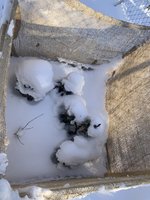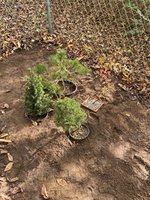Hmm.... In bonsai the answer is Aways "It depends". I hope this is clear... but its a simplified explanation so further study will reveal more twists and turns.)
Trees have to be in Ectodormancy, the final stage of dormancy before they can "break bud etc. " This is when tree has accumulated the genetically requisite number of chilling units for that species..
Thus different species exit dormancy at different times...... and buds and roots do not exit dormancy at the same time. Roots lag buds considerably due to being evolved to being buried in the ground... or not because the trees are in pots and thus open to damage.
Once in ectodormancy there are two
separate triggers for entering/exiting dormancy, photoperiod change and temperature change.
These often act together. i.e. In fall the photoperiod decreases while temperatures decrease and trees enter Paradormancy. That's when trees become cold acclimated... and eventually "cold hardy" during Endodormancy. btw: When the two triggers do not act in synch, the
outlier is always temperature.
example: Temperatures plummeting in the fall.... that's when major damage to the non acclimated parts of the tree get damaged. ...and different tissues of trees don't cold acclimate at the same time... roots go "dormant" last.
Yet exiting Ecodormancy things get even trickier as the temperature trigger nowadays often gets out of "synch" with the photoperiod trigger...
Note: the scientific data has documented the climatic temperature trigger has become more and more variable and possibly for longer stretches of time over the past 50 years (... and much less average snow cover.... etc.)
Week long heat spells certainly thrust trees out of dormancy. When the normal cold temperatures return the non acclimated parts of the trees become damaged.
...buds and roots don't act together in leaving dormancy.... except that our trees are in pots, not in the ground... and pots are not insulators... on the bench in the wind the media temperatures can drop below the ambient temperature... but that's a whole 'nother story. ... and why I'm very conservative about putting trees in and taking trees out of protection.
So perhaps that's why people are somewhat confused as how to approach the "when to protect" and "when to put trees back on the bench" situation. The situation is fluid and getting more so over decades of time.
Cheers
DSD sends



